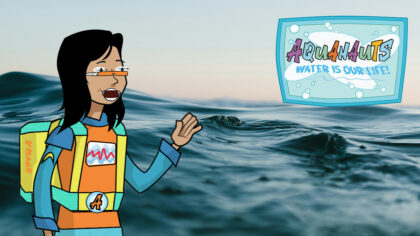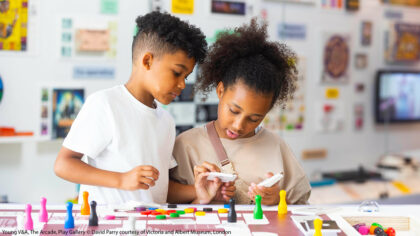To make the best use of our existing rail networks, we need to get more trains running on the tracks – and one way of doing this is getting trains to run closer together.
As Bex and Dan have already discovered, trains have their very own highway code to stop them crashing into each other.
When the light is green it tells the train the way ahead is clear, on a red light there’s a train ahead and we have to stop.
Getting trains to run closer together is a good way to get more trains on the existing network – and that’s important with passenger numbers rising every year.
Safety is also very important and so there needs to be a safe gap between trains – a bit like cars on a motorway.
As we have seen, railway lines are divided up into fixed blocks – that’s a physical section of track where only one train at a time has the right to be present.
Signals control the trains and tell them when they can enter each block and when they have to wait for their turn.
Some blocks are quite short – but others can be very long, especially in more rural parts of the country. The longest block is on the Settle and Carlisle line. It’s over 24 miles in length. With only one train allowed in the block at a time, you can see how that slows things down!

Where there’s only a single line and trains go in either direction – well, they have to wait even longer before they can take their turn!
If the fixed blocks can be made shorter, that helps more trains to use that line, and use it more regularly.
New technology can help trains run more closely together – like replacing fixed blocks with moving blocks that move with the train, so you only need a certain distance in front and behind each train, which varies according the speed of the train.
This is possible by using in-train signalling and traffic management systems which optimise the speed and movements of trains on the network.

Computers track all the trains moving around, see where they are, how close they are to each other and how fast they are going. Information is then sent to a screen in the driver’s cab. Drivers can then see what’s ahead and also behind, as well as what’s going on across the network.
Computers on each train will be able to work out the distance it needs to keep from other trains, and speed up and slow down automatically during the journey.

If you think about it, slow-moving trains can stop more quickly than fast ones – so the gap doesn’t always need to be as big as it is at the moment.
Across Britain, engineers are carrying out complex electrical work to re-control the signals – this involves moving control from the side of the track to new, state-of-the-art operating centres.
Another cool way technology can help keep things moving is with the timetable…
In the past, timetables have been created manually and are planned years in advance. A digitally connected network can get things moving. Because it’s monitored all the time, we’ll know when things are quiet enough to run a few more trains.
When things go wrong, it’s easier to re-plan routes. It’ll also mean that the train and station staff, and not forgetting the passengers, will get much more accurate information about what’s going on…

Find out more about Britain’s railways!
Bex and Dan from Fun Kids learn all about the future of Britain’s railways, from signals to trains and tracks, in this new podcast series!



 Apple Podcasts
Apple Podcasts Google Podcasts
Google Podcasts


